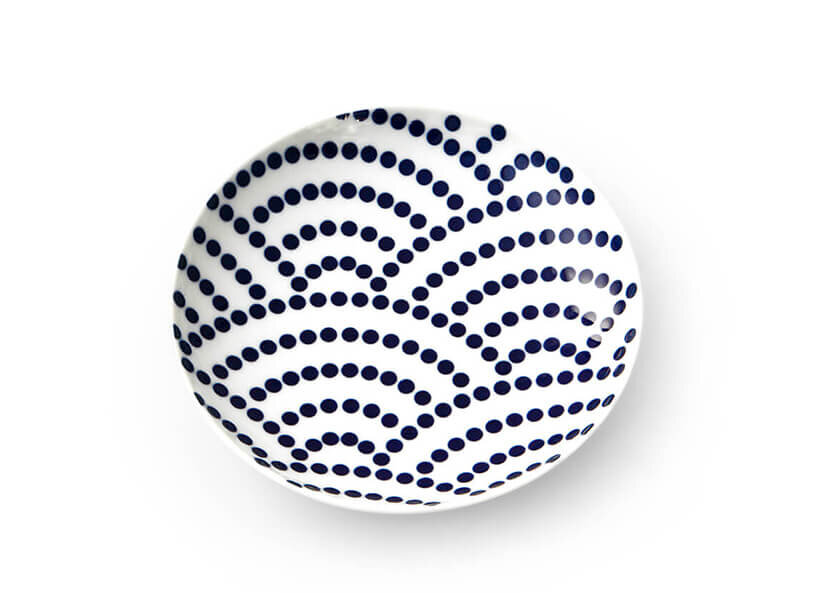Why Natto Divides Japan and Its Visitors

Delicacy or disgusting? Anyone traveling in Japan sooner or later comes across one of the strangest dishes that the Land of the Rising Sun has to offer. Even if it's not everyone's cup of tea: Trying it won't hurt!

What is natto?
What do you like to eat for breakfast? How about fermented soybeans on rice? That's Natto: a specialty that literally smells to high heaven. While it might seem unusual or repulsive to us, Natto is a popular delicacy in Japan. The fermented beans are often consumed in the morning, but also as a snack at any other time of the day. Almost everyone who has been to Japan has been tempted to try it. And most people, both locals and tourists, agree: You either love or hate Natto.
Every supermarket in Japan offers these mysterious beans in the refrigerated section, carefully wrapped in plastic. However, hardly anyone eats this dish plain: You can find it, for example, on a bowl of rice or in sushi, mixed with vegetables and soy sauce, or as part of a bento lunch box. Natto is unique to Japan, but it is slowly gaining popularity in specialty stores, restaurants, or through the internet in other countries.
The somewhat unconventional way of consuming soy may be a bit challenging the first time: a slimy texture, suspicious appearance, and the infamous smell. But if Natto seems so unappetizing, why do so many Japanese people love this dish?
There's health in here
The fermented soybeans are, so to speak, a superfood. While fermentation implies something "fermented," it simultaneously makes foods much more digestible. For those who may not tolerate soy or tofu well, Natto is the solution: Fermented, the stomach can absorb the healthy beans much more effectively.
The enzyme Nattokinase that forms during the process contributes to the production of Vitamin K2 in our intestines. Vitamin K primarily regulates calcium levels and blood clotting. In concrete terms, this means that calcifications can be prevented or even reversed, and bone diseases such as osteoporosis have no chance. Lastly, the vitamin contributes to a healthy cardiovascular system and cancer prevention. While Vitamin K1 is partly found in green vegetables, and Vitamin K2 can be obtained from eggs, butter, and cheese, few dishes stimulate such high production as Natto from Japan.
And if millions of Japanese people eat it, it can't be harmful. On the contrary, soybeans themselves contain many essential nutrients such as protein, Vitamin B6 and B12, minerals, and fiber. Additionally, probiotic bacteria are added for fermentation, ensuring sustainable gut health. The culture used here is called Bacillus Natto. Similar bacteria can also be found in yogurt or sauerkraut, for example.

A special kind of taste experiment
So, it's definitely worth a try. But what about the flavor? Describing it is very difficult and varies from person to person. Similar to good cheese, however, the smell has little to do with the taste. There is a commonality with cheese: The sticky consistency is created by glutamic acids that form threads – the longer, the higher quality. Not for nothing is Natto also called "plant cheese."
If you've bravely decided to taste the soybeans, you won't be disappointed – on the contrary, perhaps pleasantly surprised. However, especially the first time, Natto should not be eaten plain. There are many adventurous recipes that additionally mellow the taste and result in exciting dishes. For example, these:
- A typical breakfast in Japan is Natto on rice, mixed with soy sauce, spring onions, and a bit of mustard. It's served with miso soup and pickled vegetables.
- Raw egg, bonito fish flakes, caviar, pickled plums (Umeboshi), dried seaweed, or white daikon radish also pair well with this specialty.
- It doesn't always have to be rice: The soybeans, mixed with egg, spring onions, and seaweed, make an interesting sauce for spaghetti, or sweetened with honey, a topping for your toast.
- Every sushi restaurant in Japan offers Natto-Maki, so you can taste the fermented beans in small portions, innocently nestled in rice and seaweed.
- Crushed Natto can also be found in Mochi rice cakes, directly in miso soup, and dried in spice blends.
- In Japan, they even make ice cream with Natto. Threads included!
One discovery, many stories
How did the idea of letting soy go "bad" and then eating it come about? There are many theories and legends surrounding this, as is often the case with foods and in science. It is likely that the name 納豆 comes from the Japanese word for "offering place" (Nassho 納所), as it was often used as an offering at Buddhist altars. The individual characters mean "to offer" and "soybean."
Natto may have originated, for example, through a combination of rice straw and cooked soybeans. In the Yayoi period (300 BC – 200 AD), rice straw was an important building material, which coincidentally contains a high concentration of Bacillus Natto, responsible for the fermentation of soybeans. If it happened to fall into a pot of cooked beans, Natto could be produced overnight. According to one myth, Prince Shotoku discovered Natto after wrapping leftover cooked soybeans in rice straw and storing them in a warm place. A similar story is attributed to General Minamoto no Yoshiie: It is said that, surprised by an attack while having a meal in his war tent, he and his soldiers only opened their hastily packed beans after days of combat and escape. During transport on horseback, they had already turned into Natto.
Variations of a super food
Whether the stories are true or not, Natto has always been one of the most important foods for the Japanese during wars. The protein and vitamins in Natto were not only essential for strength but also promoted digestion and, according to traditional understanding, a long life. In foreign countries, it protected soldiers from infectious diseases – and could even cure some, such as typhus.
In northwestern prefectures, where the terrain is mountainous and the sea is far away, Natto also served as a substitute for nutrient-rich fish. Although it was not considered a dish for the higher classes, it was particularly popular among monks and samurai. Later, it became a popular and nutritious fast food for busy salarymen in Tokyo. With modern industrial methods of production and packaging, Natto finally made its way from rice straw to supermarket shelves in the last century. Microbiologist Dr. Jun Hanzawa of Hokkaido University significantly contributed to this through his research and is considered the founding father of modern Natto.
Fermented soybeans have been around for a long time – at least since the 11th century when it first appeared in local writings. In various prefectures of Japan, not only one type is represented, but a wide variation has developed: Whether roasted, refined with salt and mold, as chunks, or sun-dried. Modern variations that taste milder are, for example, mixed with almonds, bran, or seaweed. Today, there is even Natto made from barley or rice. The most common variant nowadays is called Itohiki Natto ("thread-pulling Natto") and can also be easily prepared at home by anyone.
Making fermented soybeans yourself
If you've become curious about Natto, you don't need to travel far or spend a lot: You can easily make this special delicacy at home. Not many ingredients and utensils are required, but a bit of patience is necessary. If you're adventurous, you'll soon reap the health benefits of this Japanese specialty.
 4 personsNo. of persons
4 personsNo. of persons
 approx. 1.5 days preparation time Preparation time
approx. 1.5 days preparation time Preparation time
 easyLevel of difficulty
easyLevel of difficulty
 main mealDish
main mealDish
 ca. 500kcal per portionCalories
ca. 500kcal per portionCalories
 Vegan
Vegan
 Vegetarian
Vegetarian
 Gluten-free
Gluten-free
 Lactose-free
Lactose-free
 Kitchenware
Kitchenware

|
900g
fresh soybeans, preferably organic
|
|
2 tsp
water
|
|
1 spoon
Nattomoto powder (spoon is included in the package). The powder contains the required bacterial culture and can be found on the Internet
|

And what type of natto are you?
However, if the whole process doesn't suit your taste or seems too elaborate, the enzyme Nattokinase, produced during fermentation, is also available for purchase online. This way, you can benefit from the health advantages of Natto without being deterred by the aroma or the time-consuming preparation. Natto itself is also available online or in well-stocked Asian stores.
If you haven't tried Natto yet: Be brave! And if you've already had the pleasure, feel free to leave a comment and share your opinion: How did you find it? Are you a devoted Natto fan, or do you avoid it like the plague? We're curious!

















-from-the-yakiyaki-grill-pan.jpg)




